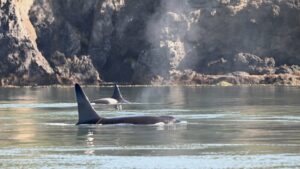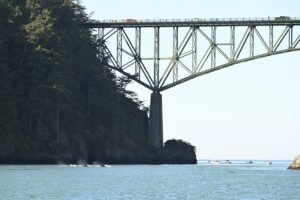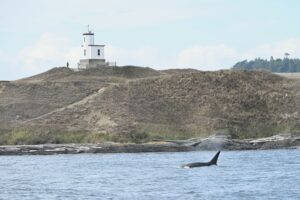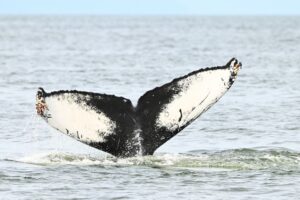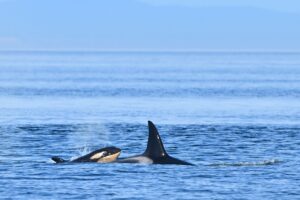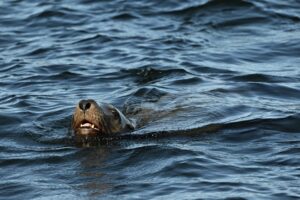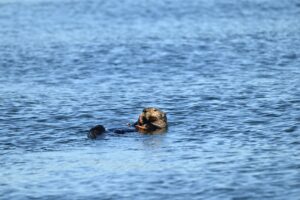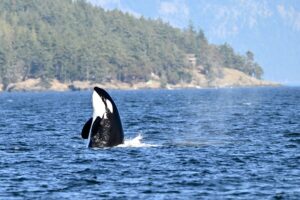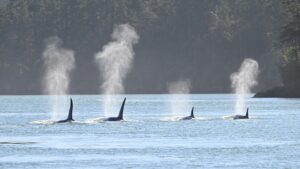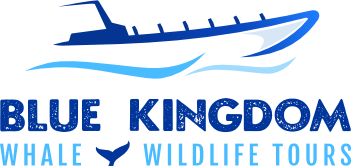Welcome to another week of our whale and wildlife recaps! Hard to believe we’re wrapping up September, but STILL having some incredible whale encounters at this time of the year.
We had an absolutely amazing week full of Bigg’s killer whale sightings and the families that we encountered while out on tour this week were the: T35As (5), T36A1s (2), T46B1s with T46C2 (now 5(!) with a new calf), T60D & T60E (2), T63 & T65 (2), T65A5, T69E, T75Bs (5), T90s (4), T99B, T100s (3), T101s (3), and the T137s (4)–a whopping 38 individuals sighted.
Our weekly notable: some of Blue Kingdom’s crew were able to get out on an impromptu, “after work hours” trip on the evening of September 23rd when a large T Party (gathering of multiple family groups of Bigg’s killer whales) was making their way from the Strait of Georgia down toward the northern part of Rosario Strait–basically right in our proverbial backyard. This large grouping is 100% the reason that the central Salish Sea saw such an uptick in individual Bigg’s killer whales this week. The small group that was aboard our semi-covered vessel, Wake, also got an encounter with this large group towards the end of their tour! The group consisted of 33 individuals and it was awe-inspiring to see so many dorsal fins in one place–especially some of the legendary males, like T63 Chainsaw! See our Instagram/social media post for the play-by-play of our evening, crew encounter!
We made several trips due west and up north into BC waters (Strait of Juan de Fuca and the Strait of Georgia) and encountered humpbacks in those areas, but have also started to see individuals passing through the islands, heading west. Could this be the beginning of their exodus as they migrate to warmer water breeding/birthing areas? Humpbacks encountered (and successfully identified) this past week were: BCY1033 “Merlin,” BCX2255 “Vega,” BCY1415 (no nickname), BCX0915 “Fallen Knight,” BCY0195 “Fader,” and BCY1474 (also no nickname).
We also encountered several minke whales where larger bait balls (large tight packs of forage fish just beneath the surface of the water) were forming–mostly off the south end of San Juan Island and Lopez Island. Sometimes These whales seemed to really be focused on eating, sending lots of gulls into the air when they would come up and lunge through the bait fish. Before we know it, they will few and far between until all have left the Salish Sea for warming waters to breed and/or give birth, as well.
Another little notable was the presence of a sea otter that was spotted on several tours when we were in the vicinity of Turn Island near the eastern side of San Juan Island. Sea otters are a rare sight in the inland Salish Sea, as the bulk of the population is found. along the outer coast, but from time to time we get these visitors taking up a kelp bed for a little while, feeding and resting while they spend time here. One one occasion, this otter was wrapped in the kelp and resting; on several others they were seen eating the gooey insides of urchins and mussels! We hope they stick around for a little while.
In all, it was a great week, and as always, we are looking forward to seeing what the next week of wildlife sightings is going to bring us.
